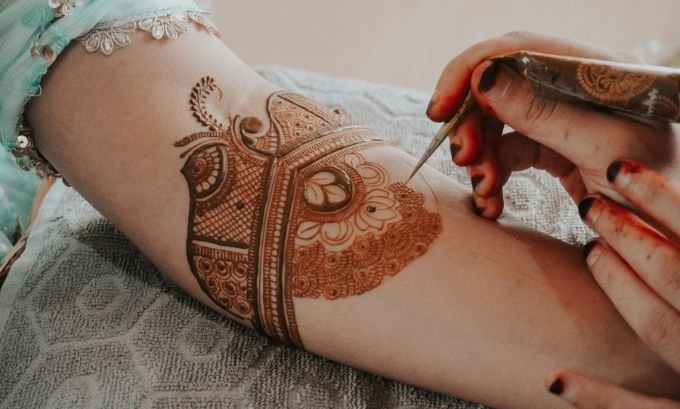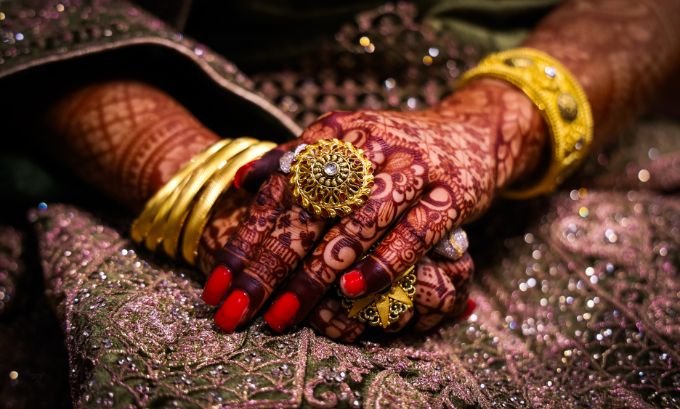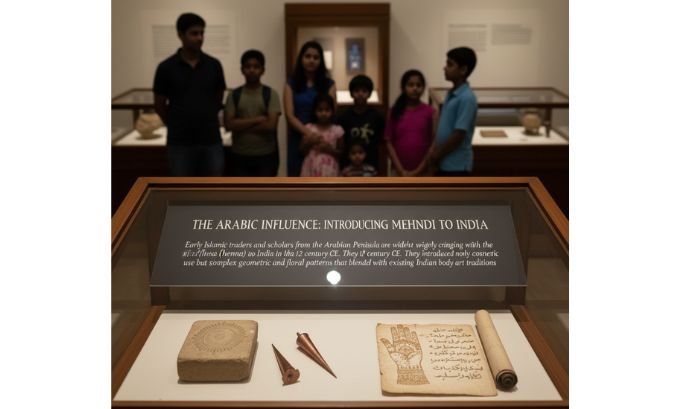Mehndi’s intricate patterns have adorned hands and feet across India for centuries, but have you ever wondered who first brought this beloved art form to the subcontinent? The story of mehndi in India is far more complex than a simple introduction by one group—it’s a fascinating tale of cultural exchange, ancient traditions, and artistic evolution.
Understanding mehndi’s origins helps us appreciate not just the beautiful designs we see today, but also the rich cultural tapestry that makes this art form so meaningful across different communities and celebrations.
Table of Contents
The Ancient Roots of Mehndi
Archaeological evidence suggests that henna, the plant used to create mehndi, has been used for body decoration for over 5,000 years. The practice likely originated in ancient Egypt and the Arabian Peninsula, where people discovered that crushing henna leaves created a natural dye perfect for cooling the skin and creating temporary body art.
However, pinpointing exactly who “introduced” mehndi to India proves challenging because the practice appears to have arrived through multiple channels over different time periods.
Key Contributors to Mehndi’s Arrival in India
Mughal Influence (12th-16th Century)
The most commonly cited introduction of mehndi to India comes through Mughal rulers and their courts. When Mughal emperors established their empire in India, they brought Persian and Central Asian customs, including elaborate henna ceremonies and intricate design patterns.
Mughal women popularized mehndi as part of wedding celebrations and royal festivities. The designs from this period often featured:
- Floral motifs inspired by Persian gardens
- Intricate paisley patterns
- Arabic calligraphy elements
- Geometric designs

Ancient Trade Routes
Long before the Mughals, traders traveling along ancient silk routes likely introduced henna practices to various parts of India. These merchants carried not just goods but also cultural practices, including body decoration techniques.
Local Adoption and Evolution
Indigenous Indian communities may have already been using various plant-based dyes for body decoration. When henna arrived, these existing practices likely merged with new techniques, creating the diverse regional styles we see today.
Regional Development and Variations
| Region | Distinctive Features | Likely Influences |
|---|---|---|
| Rajasthan | Bold patterns, thick lines, traditional motifs | Mughal court traditions |
| Gujarat | Intricate details, fine lines, geometric patterns | Persian influences |
| Punjab | Simple designs, bold strokes, wedding-focused | Central Asian traditions |
| South India | Floral patterns, temple motifs, regional symbols | Local artistic traditions |
| Kashmir | Delicate patterns, nature-inspired designs | Persian and Central Asian influences |
The Cultural Integration Process
Rather than being simply “introduced” by one group, mehndi underwent a gradual integration process:
12th-14th Century: Initial arrival through various channels including traders, travelers, and early Muslim rulers
15th-17th Century: Major popularization during Mughal period, especially in royal courts
18th-19th Century: Spread among different social classes and regional communities
20th Century-Present: Evolution into the diverse regional styles we recognize today

FAQs About Mehndi’s Introduction to India
Q: Did the Mughals invent mehndi?
A: No, the Mughals didn’t invent mehndi. They popularized and refined existing henna practices, bringing Persian and Central Asian design elements to India.
Q: Was mehndi only used by Muslim communities initially?
A: While Mughal courts certainly popularized mehndi, the practice spread across religious and cultural boundaries. Hindu, Sikh, and other communities adopted and adapted mehndi for their own celebrations.
Q: How did mehndi become associated with Indian weddings?
A: Wedding mehndi traditions likely evolved from Persian and Central Asian customs brought by various rulers and traders. These practices merged with local wedding traditions over centuries.
Q: Are there any Sanskrit texts mentioning mehndi?
A: While henna as a plant is mentioned in some ancient texts, the elaborate decorative practices we associate with mehndi today appear to have developed later through cultural exchange.
Q: Did different regions develop mehndi independently?
A: Some regions may have had existing plant-based body decoration practices, but the specific henna techniques and designs we call “mehndi” likely spread from common sources through trade and cultural exchange.
Understanding Mehndi’s True Heritage
The question of who introduced mehndi to India doesn’t have a single answer because cultural practices rarely arrive through one source. Mehndi represents centuries of cultural exchange, artistic innovation, and community adaptation.
What makes mehndi truly “Indian” isn’t its origin story, but how different communities across the subcontinent embraced, modified, and made this art form their own. From Rajasthani bridal ceremonies to South Indian festivals, mehndi has become deeply woven into India’s cultural fabric.
Rather than focusing solely on who brought mehndi to India, we can appreciate how this beautiful tradition demonstrates the power of cultural exchange and artistic evolution. Each intricate pattern tells a story not just of individual celebration, but of centuries of shared human creativity and connection.
For authentic and beautifully crafted mehndi designs, explore a wide range of cultural products at Tokyo Mart, your trusted destination for traditional Indian art and accessories.


